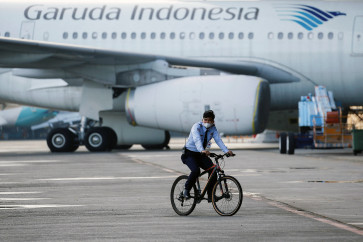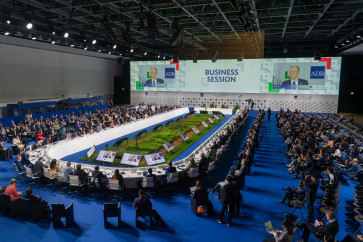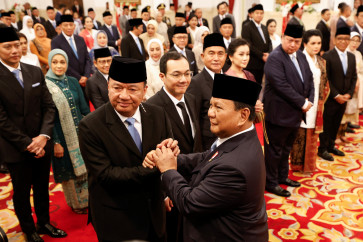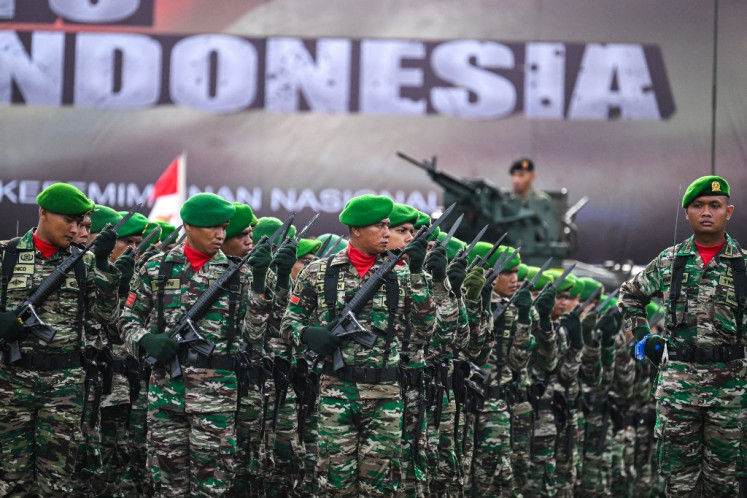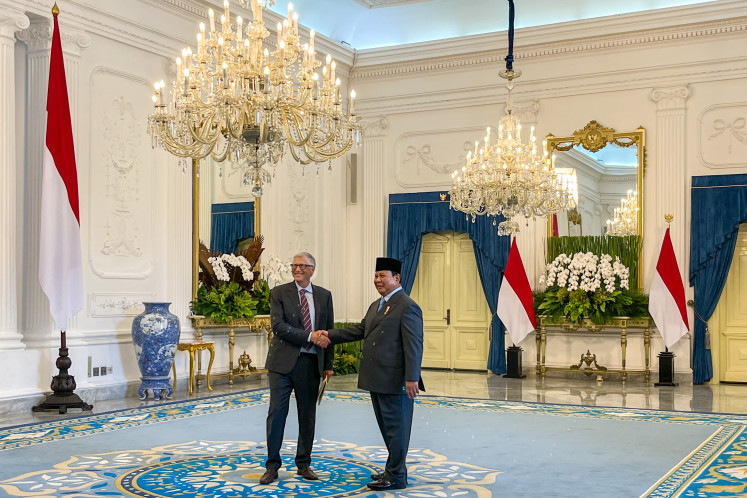Let’s promote STEM education from early age
Indonesia only produced eight STEM-related field graduates per 10,000 people.
Change text size
Gift Premium Articles
to Anyone

T
his month, I took part as a jury in a national science competition organized by a leading private school in Jakarta. Participants of the science-based contest, kids aged 4-5 years old, were asked to send in videos of their experiments in color and water to showcase how science works.
The competition has convinced me Indonesia should not fall short of scientists in the future.
Science is a part of Science, Technology, Engineering and Mathematics (STEM)-based learning, a relatively new concept in Indonesia’s K-12 education system. Many developed countries, such as the United States, the United Kingdom and China, have incorporated STEM education into their educational program since the 1990s, including their early childhood education curriculum.
Almost 30 years later, the Indonesian Education, Culture, Research and Technology Ministry embedded STEM into its early childhood education approach with the addition of the Art discipline, making it STEAM-based learning.
Experts believe that STEM education is the answer to many real-world problems, as students learn to apply science, technology, engineering and mathematics in schools, communities and daily life to meet the demand of the future workforce globally.
STEM is often referred to as the key to the jobs of the future. Our young generation is not gearing up to work in conventional jobs anymore; they are getting ready to be future software engineers, app developers and innovators.
A recent study conducted by Monash University’s Sarika Kewalramani revealed that early childhood is the ideal time to introduce STEM-based play. In the pilot study, children’s creative thinking skills were challenged using simple-battery operated toys and teachers were equipped with iPad-controlled robots as the basis for a lesson on engineering and electronics. The evidence suggested that instead of waiting for primary years, STEM skills need to be fostered from early years, as today’s young children are tomorrow’s workforce.
For Indonesia, acknowledging the importance of STEM education from early childhood education is critical. Data from the National Development Planning Agency (Bappenas) in 2019 showed that Indonesia only produced eight STEM-related field graduates per 10,000 people. The number is far lower than that of China and India. Worse, Indonesia ranks among the bottom 10 of 72 countries in mathematics and scientific skills.
The Indonesian education sector is facing a tougher battle due to the pandemic. STEAM-based learning requires young learners to have hands-on experiences allowing them to explore their curiosities and interests and develop and test theories in everyday situations. However, with the school closures during more than two years, STEAM-based learning became a challenging discipline to implement as all early learners were not able to experience STEAM-based learning in-person.
A recent policy brief published by the Education, Culture, Research and Technology Ministry’s research agency also highlighted that before the pandemic, Indonesia had already experienced a crisis in learning achievement, and that the pandemic only exacerbated inequalities in access and achievement amongst its young learners.
The pandemic also prevented many learners from lower-income families from school enrollment or disengaged them from the learning process.
Yet all is not lost, as we are seeing progress with the launch of Kurikulum Merdeka (Freedom Curriculum) by the Education, Culture, Research and Technology Ministry in February. The new curriculum is intended to provide a simpler yet more in-depth learning approach that focuses on the essentials, as well as the children’s competency development. In this method, teachers are given more freedom to design their lesson plans to suit the students’ conditions, interests, talents and aspirations.
The new curriculum can serve as a perfect breeding ground for STEM or STEAM-based learning in early childhood settings. With the new curriculum, educators in the early childhood sector have more liberty to explore the children’s sense of curiosity when it comes to dissecting thematic learning in and out of the classrooms.
As a parent and an educator, I have seen how curious children are with the world around them. For instance, a two-year-old boy, who recently learned to walk, often experiments with the things around him by grabbing and putting them into his mouth. It is the ultimate role of teachers or parents to harness the children’s curiosity and set them on a path of success.
During an interview, young math and science Olympians and siblings Devon Kei Enzo and Mischka Keia Aoki shared one of their learning techniques, which helped them win more than 40 prizes in international math and science competitions. They claimed that they did not take extra lessons outside of schools; instead, they learned from different channels and tried to figure out the answers by themselves.
The reasoning behind their approach was that they believe teachers often offer the answers to the math and science problems without allowing the children the opportunity to develop their own critical thinking and come up with their answers by themselves.
This is an important critique of our education system, because the majority of our teachers tend to focus on providing the answers to our children, whilst forgetting to take time to challenge the way our children think and perceive the problem in front of them. With more freedom to elaborate on a subject or a topic, teachers can now spark a conversation and discussion with their young students that provides them life lessons that they will remember, instead of just forcing them to accept the results.
While the new curriculum is warmly welcomed, much research is needed to monitor the effectiveness of the curriculum against the implementation of STEAM-based learning across all school levels in Indonesia. One of the foreseeable challenges in implementing STEAM-based learning in Indonesia is the fact that STEM or STEAM-based learning is a recently-introduced education framework in Indonesia; thus, much adjustment is still being done across all education levels.
Take, for instance, a study by Anna Permanasari from Indonesian Education University (UPI) in Bandung, which found that not many teachers in secondary schools have applied the STEAM approach for science learning in the classroom. There is a need to encourage K-12 teachers to advance their knowledge in ways that demonstrate the connections between the STEAM disciplines, in ways that can help their students connect with STEAM learning.
Students’ weak understanding of STEAM learning was also cited as one of the main factors affecting the integration of STEAM-based learning in the country. The findings also pointed out that most students were not even familiar with the term “STEAM education”, considered the subjects contained in STEAM difficult and therefore lacked interest in learning them.
The Kurikulum Merdeka is a chance for the government to revisit the education system to meet the demands of the world’s future workforce, starting from early childhood education.
We need to improve public policy and practice in the early childhood education sector with an aim to help create future STEM graduates to enhance the country’s competitiveness globally.
***
The writer is a lecturer at Atmajaya University and cofounder and owner of an early childhood center.

